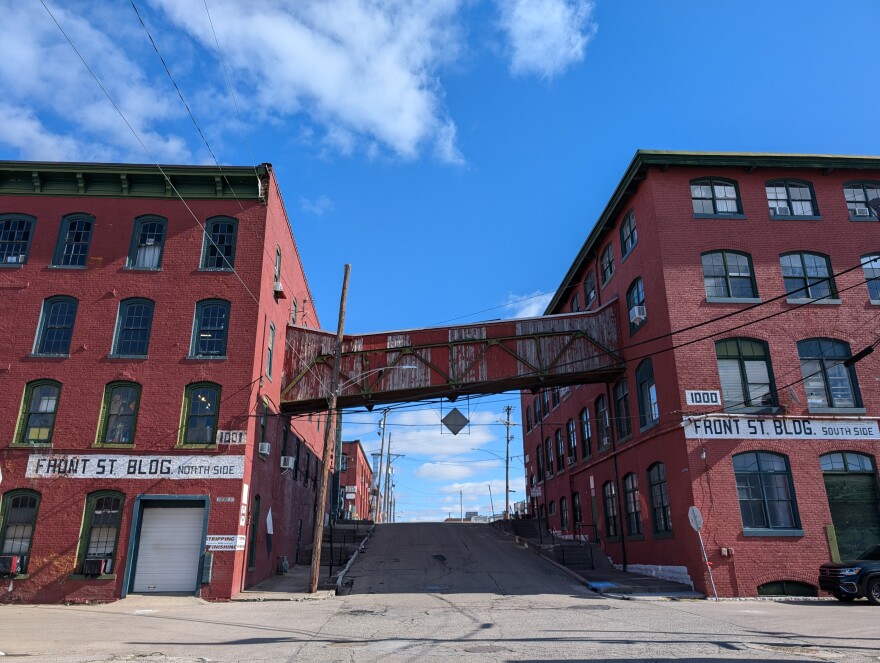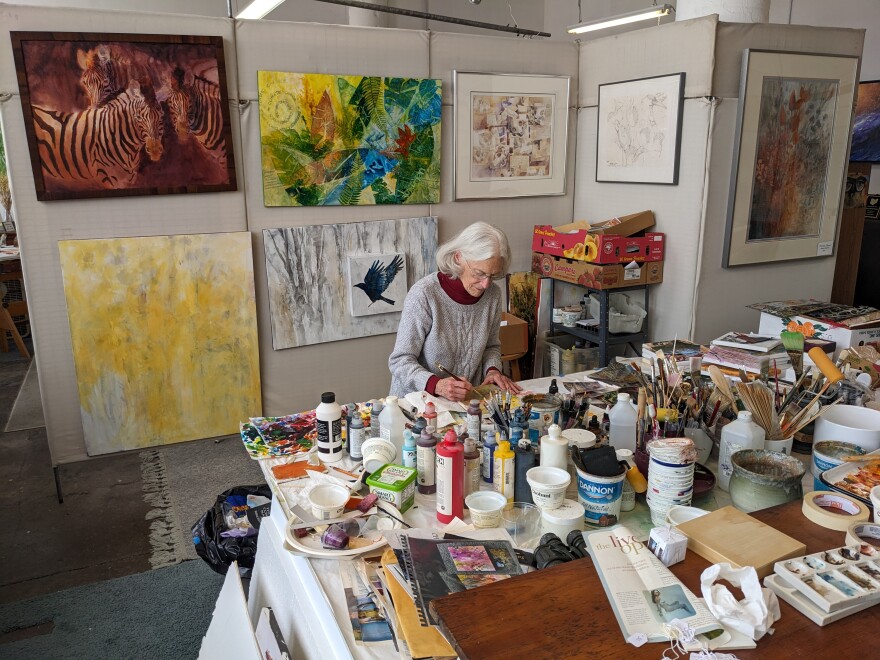This year the Front Street artist community in Dayton celebrates its 60th anniversary.
Richard Lundin manages Front Street’s three repurposed industrial buildings. Pointing to one of the old freight elevators in the main building, Lundin said the wooden slats on the doors are over a hundred years old— a remnant from the space's days as a manufacturing hub.
Back in the mid-nineteenth century, the Front Street buildings were constructed with the The Miami and Erie canal running underneath to power the small industries there.

At the beginning of the twentieth century, a company called Mercantile Corporation took over the space and hired mostly women to produce envelopes and letterhead paper for the U.S. government. In 1965, Mercantile left, and that’s when a few artists started moving in.
In the 80’s and 90’s, punk bands and skaters thrived at Front Street. There was a giant half pipe on the second floor, and Alien Workshop Skateboards was a tenant. Erich Reith was a teenager during that era. He said Front Street was the place you didn’t tell your parents about.
“It was almost like a movie for some of us, " said Reith. “There was the time I went down there for a punk rock show with a girlfriend at the time, and it turned out she had run away from home. The cops came, and they dragged me out of the building with them, and we were running from the police.”
It’s been a lot quieter since the 90’s.
Lundin, the current manager, first came to Front Street in 2015. He was a financial advisor in Chicago real estate, and the owners of Front Street asked him to appraise the buildings. Lundin grew up in a body shop, working on and fixing up custom cars.
"I remember a conversation I had with my wife probably about a week or two after I got here,” said Lundin. “ I said, 'Dayton is a fixer upper,” and she said, 'Oh no.' because I love a good fixer upper.”
Lundin wanted more people in the community to see the work being made by artists at Front Street. He wanted to do that by expanding and promoting the collective's monthly First Friday open studio night, and he needed the artists’ participation. So some evenings, he grilled up hamburgers in the parking lot to get the conversation going.
“We’d sit around on a Friday night,” Lundin recalled, " just got everybody comfortable being around everybody and talking.”
Lundin also improved the safety of the buildings and built relationships with the fire department and the city. Now all the buildings are open every day for people to wander into studio where artists are working.
Elisha Frontz is new to Front Street. Her work fuses watercolors, paper constructions, and sewing to create undulating rhythms in a flowing geometry. She said she remembers her and her studio mate’s first First Friday.

“All of the veterans of the building had shared to all of their followers that they were so excited for us to be able to share our work with the people that loved their work too,” she said.
One veteran artist has his studio upstairs from Frontz and stops by regularly. Frontz said it's like being back in art school.
“We will have amazing existential conversations about line or how the subconscious is playing into what I’m creating, and he will bring pieces of own that he's working on," she said.
The open studios of Front Street foster these conversations with visitors as well.
Sharon Stolzenberger has been in her studio for twenty years. She paints animals and wildlife in vivid watercolor and mixed media on abstract backgrounds. Recently, she painted the skulls of different animals to depict an environmental lesson of predator and prey. On one First Friday, a visitor was drawn to the painting, she said.

He was talking about all the scientific terms related to the skulls,” Stolzenberger said. ”And then I showed him a cow skull I have, so he told me he was a retired professor of comparative anatomy. It was a couple months later on a First Friday when this gentleman returned with this pig skull, and he presented this to me.”

Front Street has cleaned up a lot since its punk rock, skater days, but it has managed to keep its sense of creativity and community.
To learn about Front Streets’ First Friday and Saturdays every month and their 60th anniversary events this year, visit their website.
This story was produced at the Eichelberger Center for Community Voices at WYSO. Culture Couch is supported by the Ohio Arts Council.


